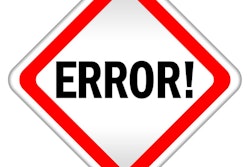The very common FDA clearance process for medical devices, called “510(k) notice” after the section of the law, is supposed to be a swift path to market, but it’s not always so.
What’s more, although large swaths of the device industry have been exempted from having to file a 510(k) notice before entering the market, those companies that do have to file 510(k)s will often struggle with knowing exactly what’s expected of them.
More than any other product category The Food and Drug Administration regulates—including food, drugs, cosmetics, biological products and animal foods and drugs, among others—the medical device field includes an extraordinary variety of technologies and purposes. Medical devices encompass items as simple as latex gloves, surgical gowns, and tongue depressors, all the way up to sophisticated electronic diagnostic equipment complete with computer software, MRI machines and artificial hearts and limbs. It is difficult, therefore, to come up with a one-size-fits-all regulatory scheme.
Even the 510(k) process, because it applies to such a wide range of devices, is complex. One indication of the complexity is that when FDA wants to spiff it up, it announces, as it did in January, 25 separate steps it will take, and that’s just for starters.
When a company files a section 510(k) notification to FDA, it is supposed to establish that the new device is “substantially equivalent” to a pre-existing device that is legally on the market, called the “predicate device.” Problem is, it can be difficult to know exactly what else is on the market, and to make judgments about whether your product’s characteristics really are close enough to the other to take advantage of the exemption.
The search for substantial equivalence is an inquiry into facts that establish that your device is at least as safe and effective as the predicate, and though the two devices need not be identical, it’s rarely a walk in the park. An FDA guidance document explains that substantial equivalence “is established with respect to intended use, design, energy used or delivered, materials, chemical composition, manufacturing process, performance, safety, effectiveness, labeling, biocompatibility, standards, and other characteristics, as applicable.”
What’s more, although the conventional wisdom is that clinical trials (experiments in people) are not required for 510(k)s, sometimes they are, and predictability is not always possible. Figuring out if you’d need clinical trials can be important to deciding whether to pursue a new product at all.
For FDA, there has always been a kind of natural tension between its twin missions of, as the agency puts it, “the two public health goals of facilitating innovation and assuring that medical devices are safe and effective.” For a device maker facing a possible 510(k), there’s always been a natural tension between coming up with a new and different medical device that is worth marketing, while at the same time wanting to fit it into a conceptual regulatory pathway that emphasizes your device’s similarity to prior devices.
Everyone’s job is just made harder when the key concepts involved are hard to interpret.
FDA’s new series of 25 specific actions are intended to implement recommendations made by two different advisory bodies to the agency’s device folks, the Center for Devices and Radiological Health.
And, in a nutshell, FDA does not appear to be fooling around: It announced these 25 actions together with projected dates of completion, all of which are within 2011. Some of them call for FDA to issue industry guidance to improve predictability, some are internal and administrative matters, others are “programmatic and regulatory,” and some are matters on which FDA is asking for some further input on from the government’s Institute Of Medicine.
FDA says it will streamline the “De Novo” process, which itself was supposed to be a streamlined review of low-risk devices. When a new device is found by FDA to be not “substantially equivalent” to a “predicate device,” the law used to say in most cases that that device was Class III, meaning it required a premarket approval, the big, expensive laborious path to marketing. You could petition for reclassification to Class II or I, but after all, what a headache.
Congress changed the law in 1997 and set up a “De Novo” process that, says FDA, “provides a possible route to market low risk device types.” Under this process, the applicant can ask to avoid the premarket approval, with the hope that FDA agrees to put it into Class II or I even though there is no predicate device preceding it. Now, FDA says it plans to streamline this would-be streamling process.
FDA says it will take a closer look and get more public input before implementing some of the recommendations, including the idea of posting labeling and photographs of cleared devices online.
Public input has a been an important part of this process, says FDA, and patterns did emerge from the input. Watch for a public meeting on the measures sometime in April. It commented in announcing its actions, “The recommendations that received strong support generally encouraged increasing the efficiency and transparency of the review process through guidance, enhancing training for CDRH staff and industry, assessing center [CDRH] staffing needs, and improving the quality of the review process and the use of new science by developing better internal business processes and engaging with external experts.”
The device industry hopes the 25 steps lead to an easier path to market for packagers of safe and effective new devices.























